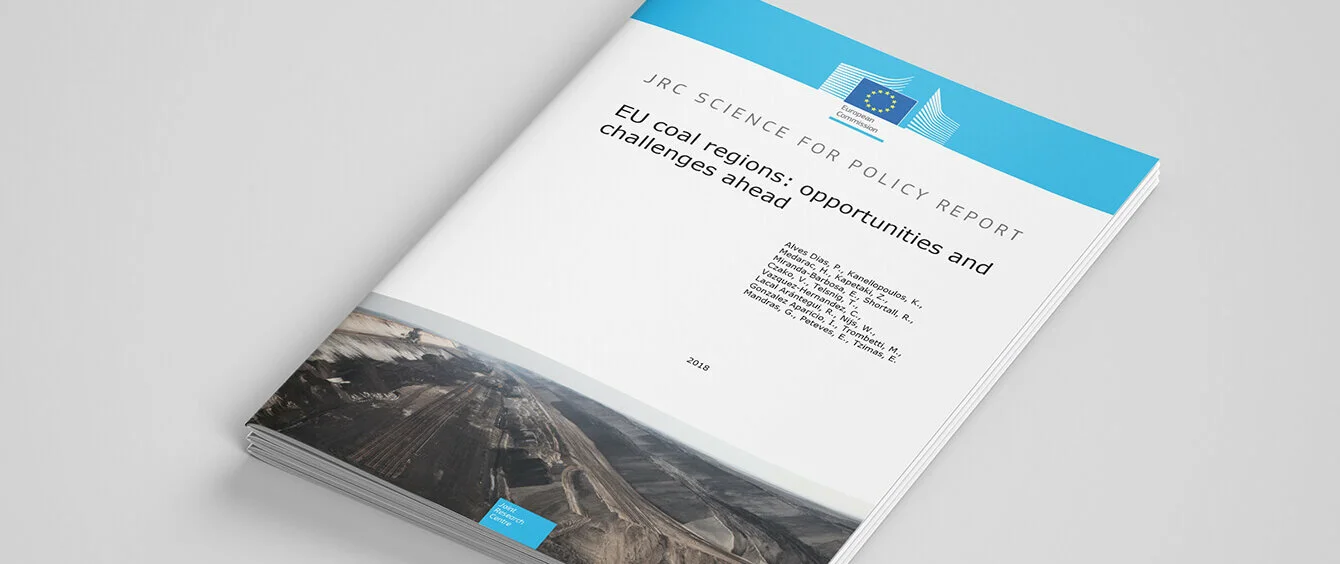A recently published study by the Joint Research Center (JRC) clearly shows the extent of the effect on jobs resulting from a hasty withdrawal from coal mining and coal-fired electricity generation – not only in the energy sector itself but also primarily in energy-intensive industries. It demonstrates the necessity of incremental structural change designed to avoid breaking up structures.
Coal-fired power generation could be reduced by around two thirds by 2030, entailing major structural risks for the mining regions in Europe. This is the conclusion from the study entitled ‘EU coal regions: opportunities and challenges ahead’ by the Joint Research Center (JRC), the European Commission’s research department.
In addition to the age of the industrial plants, the main factors for the closure of coal-fired power stations are, firstly, the rate at which regenerative energy supplies are expanding and secondly, the European Emissions Trading System (ETS). This is going on even without any political directives for phasing out coal-fired electricity generation.
Reducing capacity costs jobs
Although the planned reduction of generating capacity from 150 to 55 gigawatts by 2030 will, in the view of the JRC, be good for the carbon footprint, the adverse effects on employment, enterprise and the macro-economy as a whole in the European coal regions have previously been overlooked.
About 237,000 people are currently employed in the coal sector in the EU. The authors of the study assume that 77,000 jobs will be under threat by 2025 and 160,000 by 2030. The effects will be felt most acutely in the UK, Poland, Germany, Bulgaria, Spain, Romania and the Czech Republic. In Poland alone, up to 41,000 jobs could be at stake. More than 10,000 jobs each in the Czech Republic, Romania and Bulgaria are said to be under threat.
Some of the job losses might be alleviated if the operating time of some power stations could be prolonged by retrofitting them with CO2 scrubbers. These are the plants that emit carbon dioxide in their flue gases. It is estimated that 13% of European power plants could qualify for this. To this end, however, according to the authors, some legal and regulatory obstacles would need to be overcome.
Other industries would be affected
As well as the jobs in the coal sector itself, a further 215,000 jobs indirectly dependent on the coal sector would be threatened. Phasing out coal mining and closing down power plants would have the strongest effect on energy-intensive industries. For instance, the European iron and steel sector depends on reliable energy supplies. Additionally, the availability of coke, which is essential for steel production, could suffer as a result of any decline in domestic coal mining.
“An ill-prepared phase out of coal could send shockwaves through the most affected regions, causing businesses to close and more people losing their jobs”, summarise the authors. Thus, the study warns against the rupture of structures as a result of over-hasty withdrawal from coal mining and coal-based power generation. Instead, closures should be strategically planned and accompanied by an incremental industrial restructuring process. Building up on existing structures, a possible opportunity for the affected regions might consist in creating new jobs in the energy industry, for instance in the renewable energy sector.
The background to this demand is that phasing out coal already depends on the expansion of electricity grids and renewable energy.
The complete study “EU coal regions: opportunities and challenges ahead“ in English can be viewed on the EU Sciences Hub website.
Photo credits: © Publications Office of the European Union
